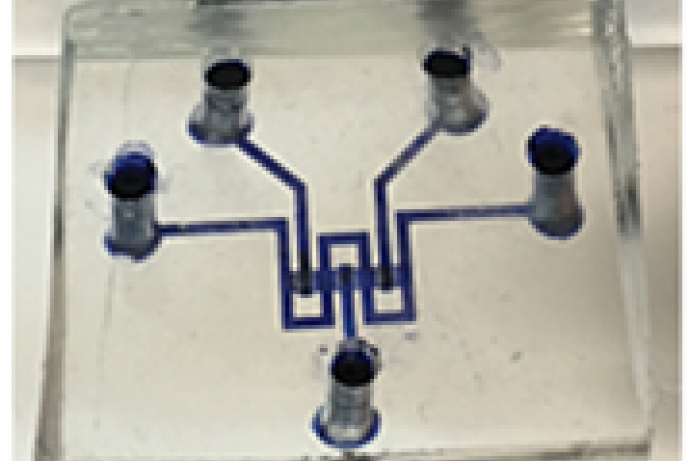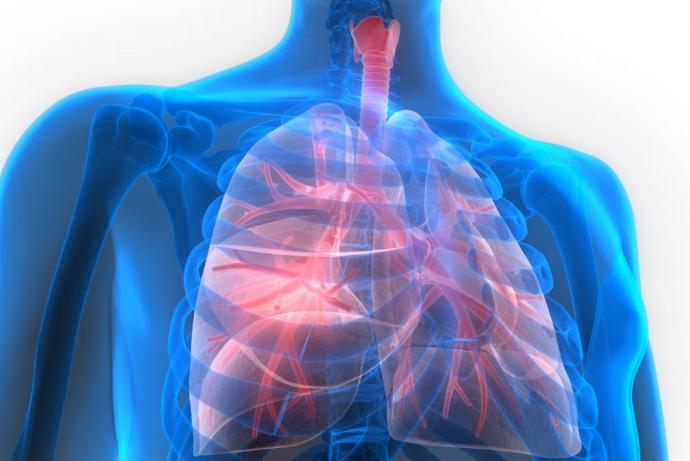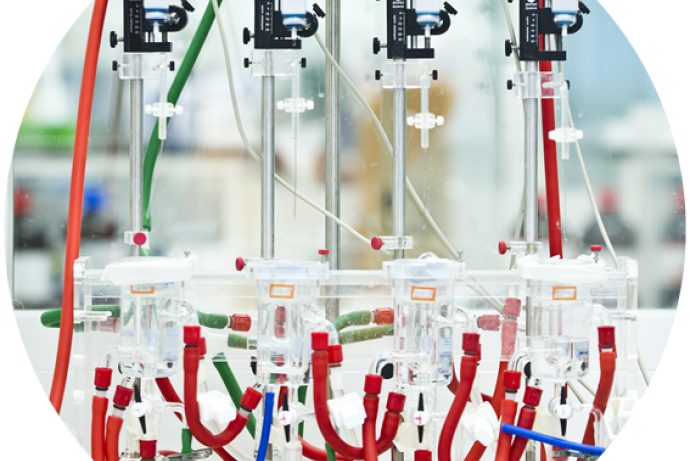Identification of all protein interactions of lead chemicals during drug discovery would improve understanding of therapeutic and safety properties enabling optimal use and design of animal studies. Current chemical-protein profiling technologies are either too expensive, require chemical modification or screen limited target panels. The team have achieved proof of principle of a novel mass spectrometry-based profiling method that can detect the binding of label-free (unmodified) chemicals to potentially thousands of targets expressed in cell microarrays. Partners are sought to help develop and test the platform for routine use in drug discovery.
Through CRACK IT Solutions, the consortium (Phenotox Ltd, Retrogenix Ltd and Sheffield Hallam University) partnered with Biogen, a US-based company. With the Solutions funding awarded, the consortium assessed the potential for a mass spectrometry based system to profile the interaction of unmodified (label-free) chemicals to protein targets of interest. Further work is required to optimise the LESA-MS/MS platform, making it suitable for use in drug discovery and chemical safety assessment. This approach could be used as an early toxicity and efficacy screen to reduce the number of toxic or poorly efficacious compounds progressing to animal studies.
There are a wide range of in vitro functional screens offered by service providers that cover approximately 1500 targets from major receptor classes (e.g. kinase, GPCR, ion channels). These technologies have been developed to determine off-target related effects of chemicals, because interactions with proteins beyond the intended target influence the therapeutic, ADME and toxicity profile of small molecule drugs. Examples of these technologies include:
- Proteomics that can be used to identify proteins that interact with chemical ligands tethered to columns for affinity purification of interacting proteins or modified to covalently bind to protein targets resulting in a change in mass.
- Activity-based probes that can be used to profile chemical interactions with enzyme families and interactions are identified through affinity or competition studies.
- Ligand-target interactions can be monitored globally by assessing the response of complex protein mixtures to proteolysis or oxidation.
Most of these approaches are "open ended" and could potentially provide complete off-target profiling during drug discovery. However, due to cost, it is only feasible to assess the toxicity of commonly hit targets during lead selection and so this knowledge often occurs too late to capitalise on desirable properties and to avoid unwanted properties. Also, some off-target interactions are not evident until after a drug has reached the market with implications for repurposing and drug safety, and wasting a considerable number of animals during development. Therefore, there is an unmet need for a solution that can provide comprehensive target information at the lead selection stage of small molecule drug discovery.
This solution has been developed by Retrogenix, Phenotox and Sheffield Hallam University. It is based on Retrogenix’s cell microarray platform in which thousands of protein targets are expressed in human cells. This is currently used by industry to determine the interaction profile of radio-labelled small molecule drugs. However, the requirement of radio-label limits the application of the approach. Working with Sheffield Hallam University a novel mass spectrometry-based method has been developed, which detects the binding of label-free (unmodified) chemicals to targets expressed in the cell microarray format, enabling thousands of targets to be profiled simultaneously.
This unique label-free solution would widen the application of off-target screening and target deconvolution in small molecule drug discovery. The cost, capacity and turnaround time of the platform is sufficient to use during the lead selection stage of drug discovery. Knowledge of protein interactions of lead chemicals would be used to prioritise in vitro functional assays to derive a complete therapeutic, ADME and toxicity profile.
It is envisaged that the solution would be used as a “first point of contact” platform to identify which targets should be followed up by functional assays that are generally available from service providers. The solution could be applied to drug discovery to select lead chemicals with optimal therapeutic off-target effects. Similarly the solution could identify off-targets associated with toxicity, allowing more optimal chemistry to be developed. It would be possible to assess interactions of the parent compound with ADME related targets (transporter, drug metabolising enzymes). The solution could also be applied to phenotypic screen-based drug discovery for target deconvolution of small molecules.
The initial platform would consist of human targets, but it would be feasible to derive additional versions made up of targets from therapeutically relevant species (e.g. microbes, parasitic organisms). It would also be feasible to use targets from species commonly used in drug efficacy and toxicology studies (e.g. mouse, rat) to aid translation studies and unravel species differences. The solution would also be of use for other chemical industry sectors where it is necessary to understand off-target effects such as agrochemicals, consumer use chemicals and cosmetics.
Further development of the technical aspects of the platform are required, such that it is ready for larger scale studies against 500-1000 targets. Partners are sought to help develop and test the platform service for routine use in drug discovery. Specifically, partners able to provide public and proprietary compounds are sought, to support a validation study of the platform against the large target panel. The team would be happy to discuss, with interested parties, tailoring the panel to particular target families.
The team also seeks advice about how the platform could be integrated in pharmaceutical drug discovery and declarations of interest from potential customers.
Adverse outcome pathways (AOPs) and systems pharmacology modelling approaches are expected to have a beneficial impact on the 3Rs. As a “first point of contact” platform the solution has great potential for identifying molecular initiating events (MIEs) within the AOP framework and for identifying modes of drug actions within systems pharmacology. Implementation of comprehensive target screening at lead identification would allow therapeutic effects to be optimised over toxicological effects prior to testing in animals. In the short term this would avoid unnecessary animal studies for compounds that fail due to lack of efficacy or because of toxicity. In addition animal efficacy and toxicology studies could be redesigned in accordance with the prior identified target effects reducing the need for repeat studies, and potentially influencing the order of in vivo studies, e.g. testing organs of higher risk first. In the longer term the solution could accelerate the adoption of AOPs and systems pharmacology modelling approaches resulting in further reductions in animal-based methods in drug discovery.
In Great Britain in 2013 there were approximately 185,000 procedures in mammalian animal species for pharmaceutical safety/efficacy. With the high attrition rates during animal efficacy and toxicology studies a substantial reduction in these procedures in the UK and worldwide would be anticipated.
Overview
With the support of CRACK IT Solutions funding, the consortium (Phenotox Ltd, Retrogenix Ltd and Sheffield Hallam University) is now working with Biogen, a US-based company, to further develop technical aspects of the platform such that it is ready for larger scale studies against 500-1000 targets and adoption by end users. This method could, in the short term, avoid unnecessary animal studies for compounds that fail due to lack of efficacy or because of toxicity.
Impact
This study aimed to develop a mass spectrometry (MS) based system to profile the interaction of unmodified (label-free) chemicals to protein targets of interest. This tool could be used early in drug discovery to identify off-targets associated with toxicity and for identifying targets of small molecules in phenotypic screens, avoiding unnecessary animal studies for compounds that fail due to lack of efficacy or because of toxicity.
In the CRACK IT Challenge: Targeting off-targets, Phenotox Ltd, Retrogenix Ltd and Sheffield Hallam University (SHU) demonstrated that the Advion Liquid Extraction Surface Analysis (LESA) high throughput automated solvent extraction/MS injection system can identify the binding of small molecules to their targets. Through CRACK IT Solutions a new partnership was established with Biogen to develop the LESA tandem MS platform (LESA-MS/MS) towards large scale studies and commercialisation.
The LESA-MS/MS platform detected test compounds and MS standards, spotted on glass slides, down to the level of one femtomole (1 x 10-15 moles). This was within the theoretic range (10 attomoles (10x10-18 moles) to 10 femtomoles) of the amount of compound that would be expected to bind to an over-expressed receptor in a transfected cell in the microarray spot. However, significant cross contamination of the test compounds was found in the vehicle control spots, which was caused by the LESA-MS/MS ionisation system. This fault with the LESA-MS/MS meant that test compounds were evaluated using an alternative MS-imaging platform (a matrix-assisted laser desorption ionisation (MALDI) MS) for the remainder of the study. Slides consisting of 48 different target sites (GPCRS, ion channels, enzymes and transporters) were prepared and exposed to six test compounds at low, medium and high concentrations. The MALDI-MS was able to detect these compounds, however no specific binding to target expressing cells was obtained, which suggests that the MALDI-MS does not have sufficient sensitivity to detect this (limit of MALDI-MS sensitivity is 5-50 femtomoles). These results indicate that the application of MS, for the detection of small molecule binding to targets expressed in mammalian cells, will require the development of a more reliable high throughput MS analysis platform with sub-femtomolar detection sensitivity.
Discussions with pharmaceutical and agrochemical industries enabled the consortium (Phenotox Ltd, Retrogenix Ltd and SHU) to confirm there is an unmet need and commercial opportunity for label-free small molecule target profiling for both drug discovery and chemical safety assessment. Specific interest in the capability to profile against particular protein target classes (e.g. transporters, ion channels and serine hydrolases enzymes) and support in selection of test compounds was also recognised.
Further work is required to optimise the LESA-MS/MS platform, making it suitable for use in drug discovery and chemical safety assessment, as this approach could be used as an early toxicity and efficacy screen to reduce the number of toxic or poorly efficacious compounds progressing to animal studies.






